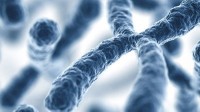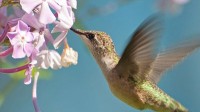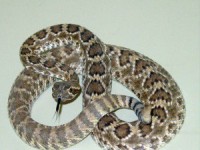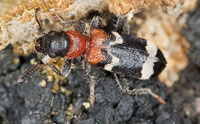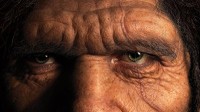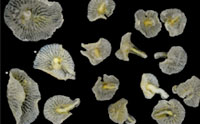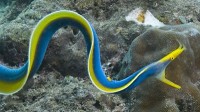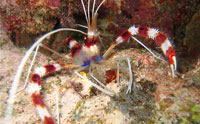Some evolutionists are hailing this as a ‘breakthrough’ in explaining life originating from chemicals by itself, but the reality is quite different. …read more Read more here: creation.com
Solution to the mystery of terrestrial toes said to reside in the spotted gar. …read more Read more here: AIG Daily
Gary Bates interviews peptide chemist Ken Funk Ph.D. …read more Read more here: creation.com
I cannot doubt the hand of God the Creator in the design of the remarkable hummingbirds. Truly they are ‘God’s tiny miracle.’ …read more Read more here: AIG Daily
By Ken Ham Mohave rattlesnake Image credit: by Lvthn13 via Wikimedia Commons If God called His creation “very good,” then why does it include dangerous venomous snakes today? Are secular researchers on the right track as they examine the snake genome in order to find clues about gene evolution in humans? The answer is clear when you start with God’s Word and remember that there are two kinds of science. According to Nature World News, “a new study details the evolution of snakes and how they came to boast a venomous bite, challenging the conventional view of how the species [More]
One of the things that becomes a total contradiction to the proposition of biological evolution is the reality of feedback. …read more Read more here: AIG Daily
Fossils clearly show that some birds used to have small teeth, but most birds today do not have teeth. When and how did this change happen? A new study in the journal Science makes a few unfounded conclusions. More… …read more Read more here: icr.org
The Wright brothers studied wing structures of seabirds before building their first airplane, and the first helicopter is said to have been inspired by dragonfly flight. Today, inventors continue this tradition, focusing on bio-inspired flight sensors. A series of telling admissions in a recent summary of state-of-the-art research leave no doubt about the origins of flight-ready sensors. More… …read more Read more here: icr.org
A popular magazine publishes an article promoting the unscientific notion of spontaneous generation, and an even more absurd claim about microbes continually raining on the earth-but retraction appears unlikely. …read more Read more here: creation.com
God created bacteria to perform vital roles in every imaginable environment. …read more Read more here: AIG Daily
If ancient history according to Scripture is true, then what should we expect to find in animal fossils? Surely excellent body designs would top the list, closely followed by a lack of “transitional forms.” A newly discovered specialized beetle inside Indian amber provides another peek into the past and an opportunity to test these Bible-based expectations. More… …read more Read more here: icr.org
Within the solar system, Mars appears most promising for life outside of the earth, so much attention has been given to the search for biogenic markers on Mars. …read more Read more here: AIG Daily
Were Neanderthals our cousins, our ancestors, or just our fellow human travelers in the post-Babel world? …read more Read more here: AIG Daily
By Ken Ham Human evolution and alcohol have been together in the news a lot recently. Discover Magazine wrote about a new study that was aimed at discovering when our supposed human ancestors “acquired the ability to consume foods containing ethanol, such as fermented fruits.” This study, “using the tools of paleogenetics,” supposedly “traced the evolutionary history of an enzyme that helps us metabolize ethanol, the principal type of alcohol found in adult beverages. Scientists believe early human ancestors evolved their ethanol-digesting ability about 10 million years ago to fortify their diet as they shifted from a tree-based lifestyle to [More]
By Ken Ham Bacterial infections are tragically killing tens of thousands of people in India as doctors are discovering that most known antibiotics are not working, according to a New York Times article . Many people will look at the tragedy and blame God in response. But is God truly at fault for the death and suffering we witness and experience in our post-Fall world? I encourage you to read Dr. Tommy Mitchell’s article on the Answers in Genesis website that answers questions like “Was God’s creation really ‘very good’?” and “Why do we die now?” I think Dr. …read [More]
A strange, new, mushroom-shaped species discovered alive on the deep seafloor off the southeastern coast of Australia may be a record-breaking living fossil. It’s not a jellyfish, sea squirt, or sponge. What is it? More… …read more Read more here: icr.org
Evolutionists are being forced to rethink so-called vestigial organs in the light of some embarrassing and harmful mistakes. …read more Read more here: creation.com
Does inbreeding in people groups explain so-called races? …read more Read more here: creation.com
Did you know that this faunal icon of Australia uses less energy to breathe when it’s hopping than when it’s standing still? …read more Read more here: creation.com
In this study, I analyzed a theropod dinosaur group, Tyrannosauroidea, through the use of statistical baraminology. …read more Read more here: AIG Daily
Does this giant groundhog-like animal that shared the world with dinosaurs tell us anything about how we evolved? …read more Read more here: AIG Daily
Biting opened the way for biodiversity, evolutionists say. …read more Read more here: AIG Daily
Did your cat evolve to like you? …read more Read more here: AIG Daily
By Ken Ham I recently saw something in Discovery News that perfectly highlights the difference between observational and historical science. Common Tenrec (Tenrec ecaudatus). By John Mather (Own work) [CC-BY-SA-4.0 (http://creativecommons.org/licenses/by-sa/4.0)], via Wikimedia Commons A study has shown that tenrecs, hedgehog-looking creatures, have an amazing ability to hibernate (observational science) so the scientists inferred that the tenrecs must have hibernated through the dinosaur extinction (historical science)! As I’ve said many times previously, there are two different kinds of science. Observational science deals with the present and is observable, repeatable, and testable. It’s what produces our technology and our medical innovations. [More]
Fossils seem to tell amazing stories about ancient animal life, but close inspection reveals that these stories differ from each other not because of different fossils, but because of different interpretations. Do the remarkable circumstances surrounding a newly discovered fossil arthropod tell two stories or just one? More… …read more Read more here: icr.org
Recently there has been some celebration from the Darwinian community regarding a fossil discovery that allegedly links terrestrial animals to their future aquatic relatives. More… …read more Read more here: icr.org
The apparent redundancy of the genetic code has long been called codon “degeneracy”—evidence that the present genetic code is an evolutionary product. …read more Read more here: AIG Daily






















